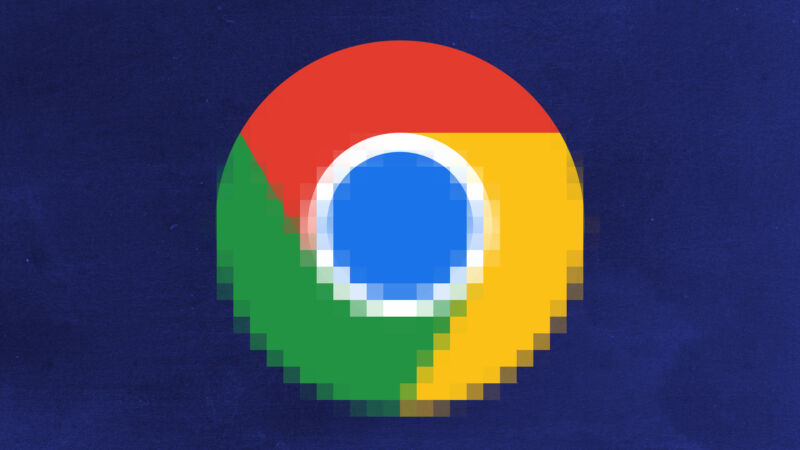
Chrome developers’ decision to remove support for a compressed image format that Google helped develop is just another sign of “the disturbing amount of control” the ad company has over browsers and the web, according to the Free Software Foundation (FSF).
In a statement, Greg Farough, campaigns manager at the FSF, took aim at Google’s stated reason for deprecating support for the JPEG XL image format, which was based on Google’s PIK format. A Google engineer, commenting on the JPEG XL issue tracker on Chromium, Chrome’s open source core project, wrote that “there is not enough interest from the entire ecosystem to continue experimenting with JPEG XL.” The format also “does not bring sufficient incremental benefits over existing formats,” and removing it “reduces the maintenance burden,” the engineer wrote.
“Putting aside the problematic aspects of the term ‘ecosystem’ when you yourself are by far the largest and most dangerous predator in said ‘ecosystem,'” Farough wrote (adding his own link). “In supposedly gauging what the ‘ecosystem’ wants, all Google is really doing is asking itself what Google wants.”
If you don’t recognize JPEG XL, it’s because it was pretty easy to miss. The format was frozen in late 2020 and was available as an experimental feature (i.e., flag setting) in Chrome version 91. It was removed in Chrome 110 (as I’ve confirmed in Chrome 112). JPEG XL proponents suggested widespread adoption of the format could spur a 25–30 percent reduction in global bandwidth use (paywall).
Even with their optimism, however, people like Jon Sneyers at Cloudinary told New Scientist in 2021 that adoption is “almost a political issue, in that companies may have their own file formats that are subject to royalties that they would like to see adopted as standards.” Very few programs supported JPEG XL at the time.
“Once we have support in at least a big chunk of the [Internet] browsers, the companies like Facebook will probably start deploying quite quickly and others will follow,” Sneyers told New Scientist.
Sneyers’ less optimistic predictions came true, though not with regard to royalties. Apple, Google, and Mozilla got behind AV1F instead. AV1F display support is already baked into Android 12, macOS 13, iOS 16, and a bunch of browsers (though not Microsoft’s Edge, curiously).
While AV1F is licensed royalty-free, exactly how the technology is licensed by the Alliance for Open Media (AOM), which includes many of the world’s largest technology firms, is under investigation by European Union antitrust regulators.
“The [European] Commission has information that AOM and its members may be imposing licensing terms (mandatory royalty-free cross licensing) on innovators that were not a part of AOM at the time of the creation of the AV1 technical, but whose patents are deemed essential to (its) technical specifications,” a questionnaire sent to tech companies read, according to Reuters.
Further complicating JPEG-XL’s chances, Microsoft received a patent on a core compression algorithm used in JPEG XL along with numerous other compression schemes. Experts in the digital image space disagreed on whether it presented a problem for JPEG XL. Ars contributor Timothy Lee told The Register that Microsoft’s patent, which came three years after a Google application for a similar Asymmetric Numeral System (ANS) patent, illustrated broader problems with the software patent system.
For its part, Mozilla, both a supporter of AV1F and the browser company the FSF specifically points to as being able to hold back a Chrome hegemony, declared itself “neutral” in a standards position post on GitHub in late January. Mozilla’s Martin Thomson wrote that while JPEG XL “offers some potential advantages,” it wasn’t “performing enough better than its closest competitors (like AV1F) to justify addition on that basis alone.” Mozilla might support JPEG XL “if usage becomes more widespread, but that will be a product decision.”
One thing that certainly could have made JPEG XL usage more widespread would have been Chrome’s full adoption of the format. Chrome accounts for nearly two-thirds of worldwide browser usage, according to StatCounter, and roughly 80 percent if you include browsers based on Chromium (Edge, Opera, Vivaldi, and Brave, among others). JPEGs have stuck around, albeit optimized, for 30 years, in large part due to their ubiquity across software, devices, and the wider web. Chrome recently moved the WebGPU API from a flagged option to default support, promising huge potential for highly portable graphics.
Google, having decided to drop JPEG XL in Chrome, open-sourced an “attention center model” machine learning tool used in the format in December 2022. It works by guessing which area of an image will catch people’s eyes first to prioritize that area’s resolution before the rest of the image is loaded.
